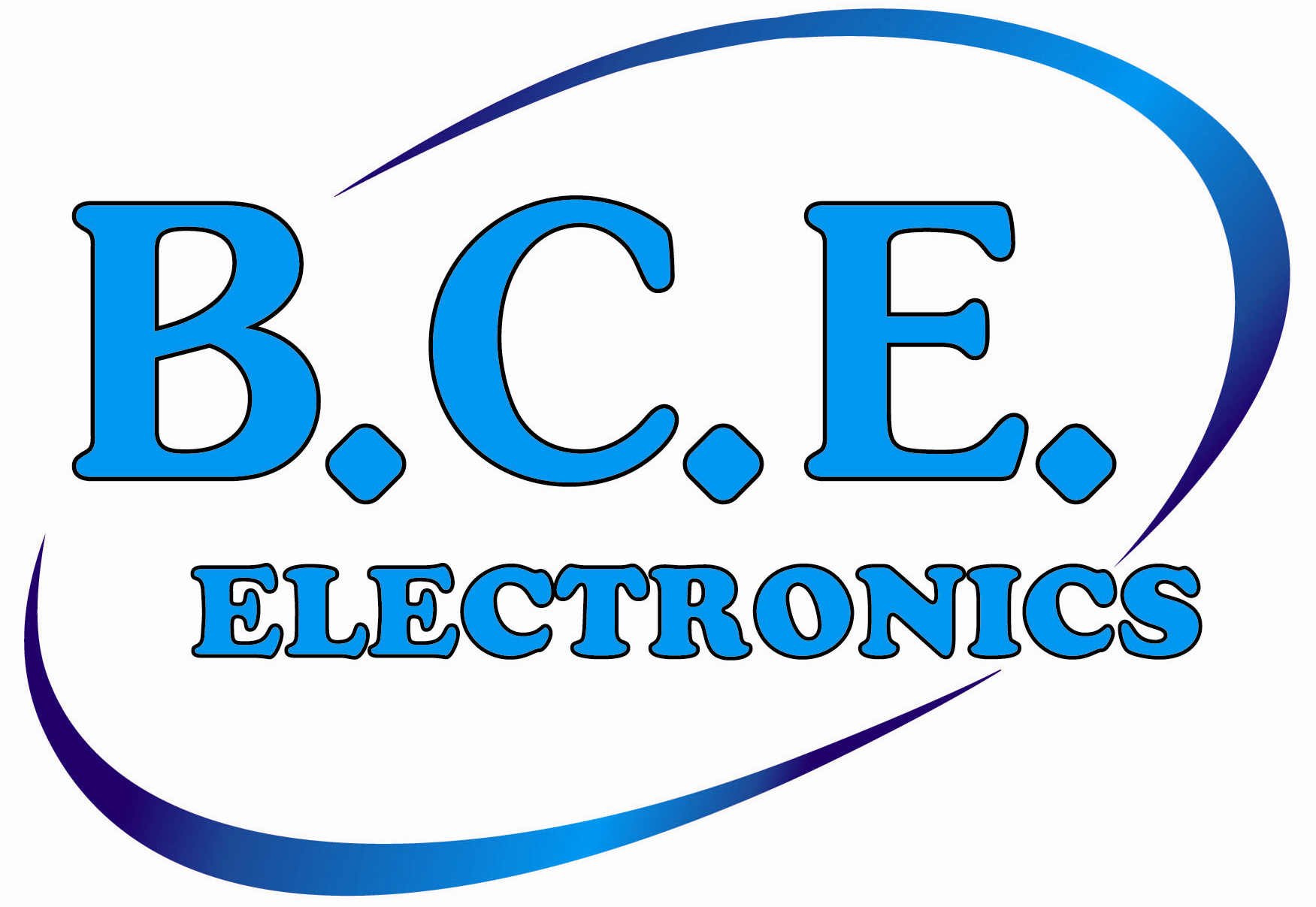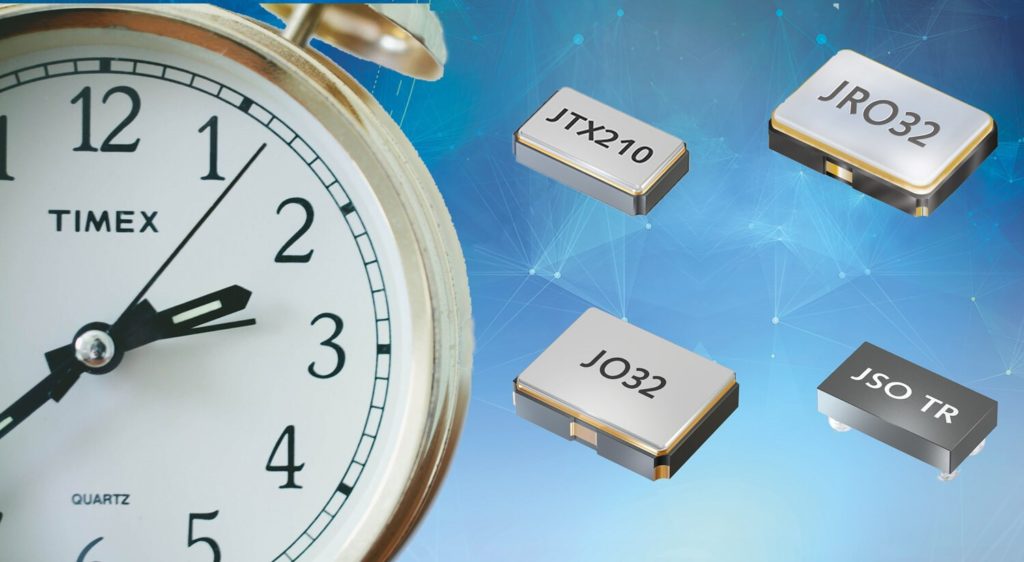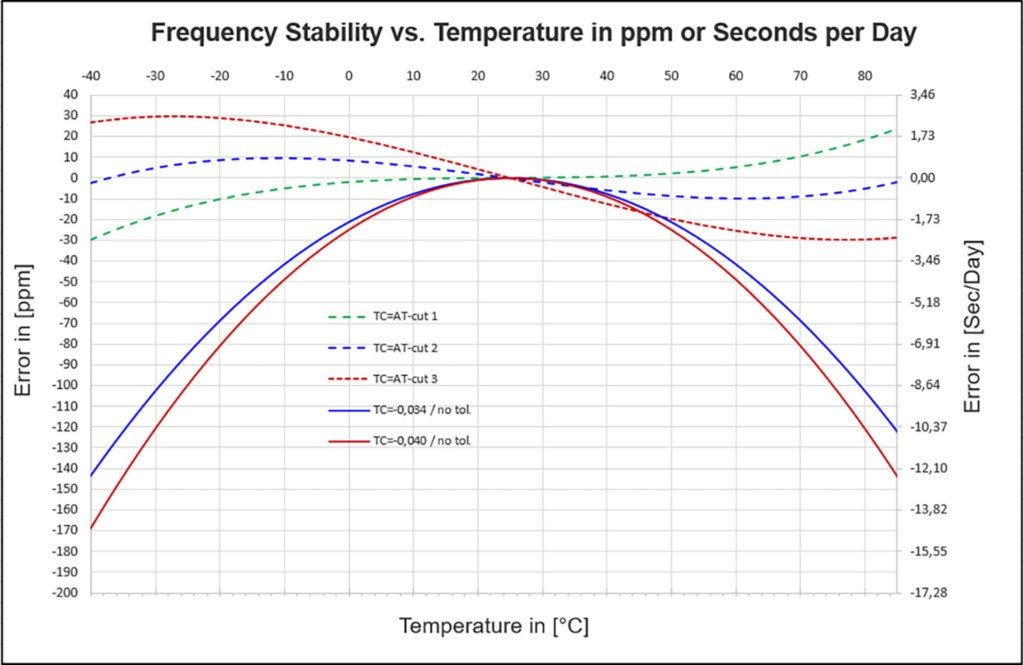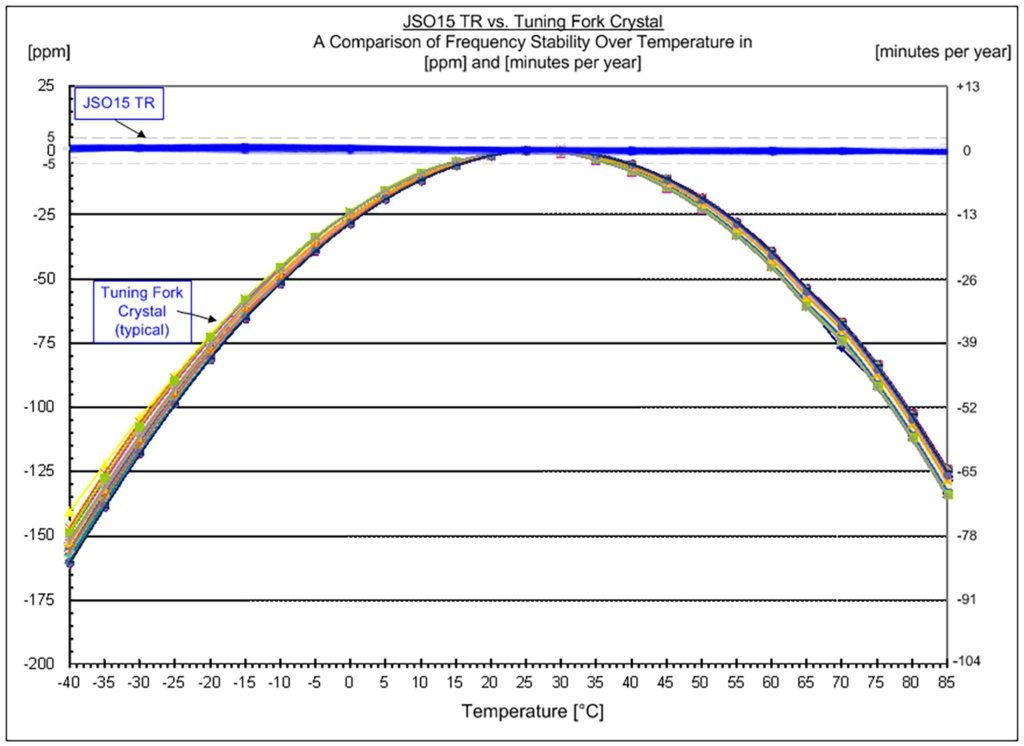The Strengths of 32.768 kHz Oscillators !!
The boom of quartz watches in the 70s has shown: When it comes to precise time recording, there is nothing better than quartz crystals! This is no different today. Frequency control products with the characteristic frequency of 32.768 kHz can be found in almost all applications with integrated time measurement, e.g. laptops, mobile phones or microwaves.
In its JTX series, Jauch offers a selection of SMD tuning fork crystals in various sizes that are used in connection with microcontrollers or RTC components. However, designing the circuits requires accuracy in order to ensure reliable function of the components. For example, special care must be taken to ensure that the load capacitors are correctly matched.
The Advantages of 32.768 kHz Oscillators
If you don’t want to go through the effort of designing the right circuit for your tuning fork crystal, you can fall back on the 32.768 kHz oscillators from Jauch, all equipped with a CMOS-compatible output signal. This rail-to-rail output enables a very easy connection to all common microcontrollers and RTC devices.
Low Current Consumption Thanks to Tuning Fork Crystal
The JRO32 32.768 kHz oscillator, for example, is very easy to use. It uses a tuning fork crystal inside and is therefore characterized by a particularly low current consumption. Furthermore, it can be operated with a variable operating voltage between 1.5V and 5.0V, which makes it particularly suitable for battery-powered applications. Due to the use of a tuning fork crystal, its output frequency depends on the operating temperature to a large extent.
AT-Cut Quartz Blank Ensures Less Temperature Dependency
However, the ease of application of an oscillator is not the component’s only advantage compared to a tuning fork crystal. The above-mentioned correlation between output frequency and operating temperature speaks for the use of the Jauch-oscillators JO22 and JO32 32.768 kHz. These oscillators use a so-called AT-cut quartz blank instead of a tuning fork crystal, so their output frequency is far less dependent on the operating temperature.
The graph below visualizes this difference, using the temperature range from -40°C to +85°C.
It can easily be seen that high and low temperatures cause comparatively large frequency deviations in tuning fork crystals (solid lines). The curves of oscillators using AT-cut quartz blanks (dashed lines), however, show much smaller errors.
It Couldn’t Be More Precise: 32.768 kHz TCXOs
The JSO15-TR from Jauch offers even better frequency stability. It’s a 32.768 kHz TCXO, offering an unsurpassed frequency stability of up to +/- 5ppm in a temperature range of -40°C to +85°C. The JSO15-TR is supplied in a tiny CSP package.
Its excellent frequency stability is achieved by precise temperature compensation, which is performed at multiple temperatures during the production process. This factory “trimming” also makes this 32.768 kHz oscillator very insensitive to fluctuations in operating voltage. Within a range of 1.5 V to 3.63 V, changes in operating voltage will have no effect on frequency stability. The extremely low current consumption of only a few µA is also remarkable.
The figure below shows: The frequency stability of the JSO15-TR is far better than the typical stability of tuning fork crystals. This makes the JSO15-TR the ideal choice for applications that require a stable timing function over long periods of time. In addition, the JSO15-TR’s miniature size and particularly low power consumption make it the right choice for battery-powered portable devices such as medical measuring instruments, sensors or wearables.
The bottom line is: 32.768 kHz oscillators have some major advantages compared to classic tuning fork crystals: They are easier to use and – depending on the model – much more accurate than the classic tuning fork crystals due to temperature compensation and the use of an AT-cut quartz blank. However, tuning fork crystals are still in need: In properly designed circuits, they also ensure stable frequencies.






















